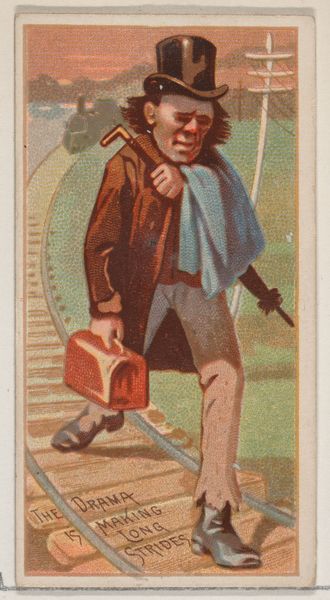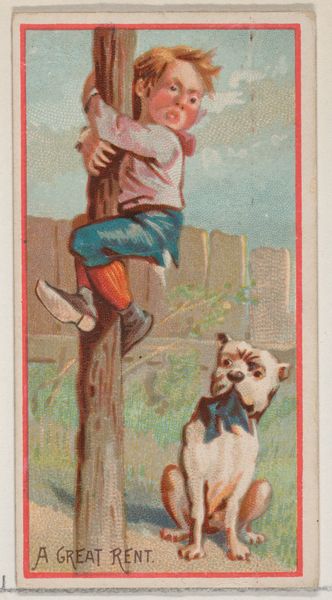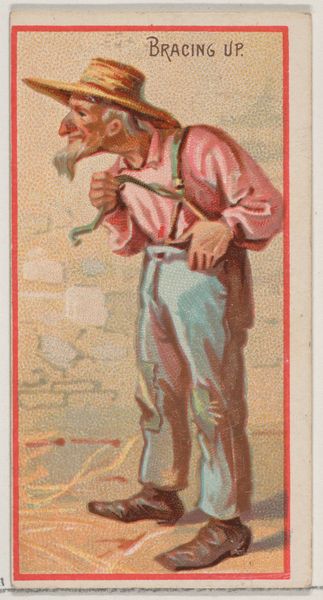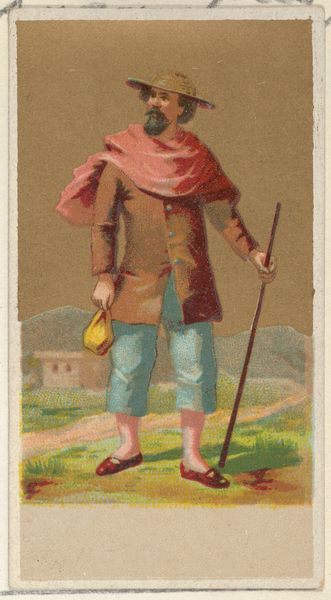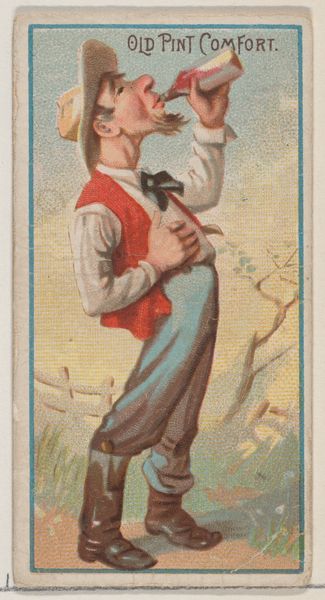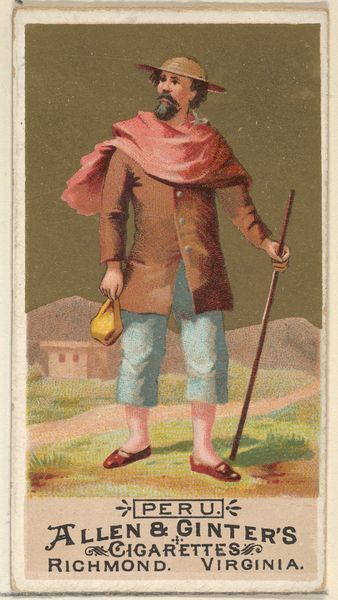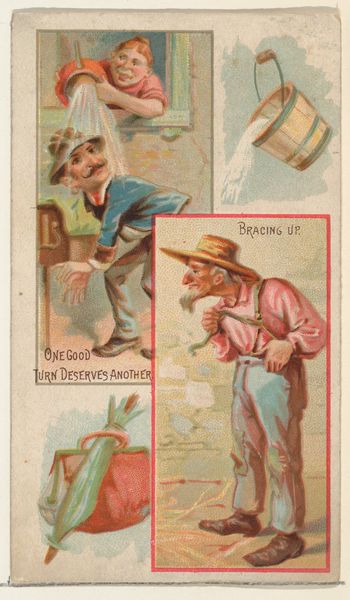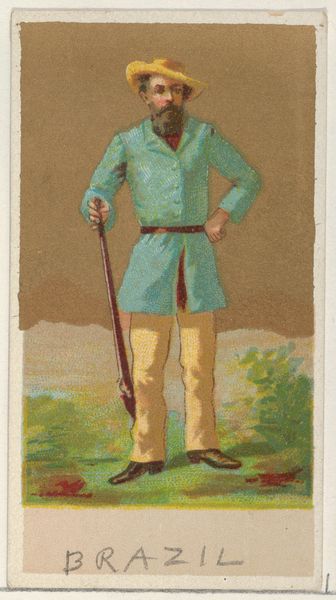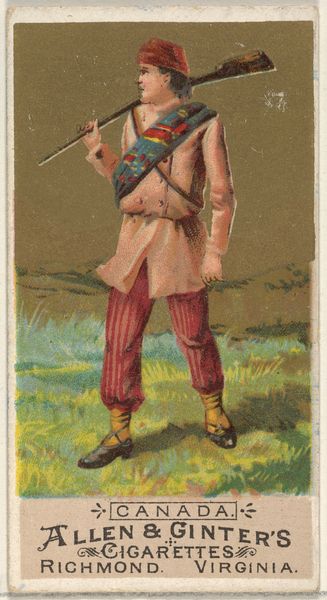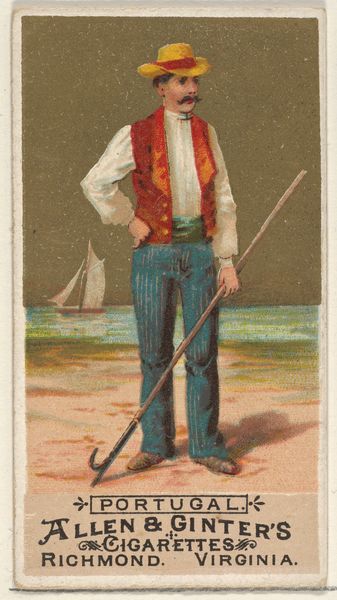
A Drop Too Much, from the Jokes series (N87) for Duke brand cigarettes 1890
0:00
0:00
drawing, coloured-pencil, print
#
drawing
#
coloured-pencil
# print
#
caricature
#
coloured pencil
#
genre-painting
Dimensions: Sheet: 2 3/4 × 1 1/2 in. (7 × 3.8 cm)
Copyright: Public Domain
Editor: So, this small print is titled "A Drop Too Much," part of the Jokes series by W. Duke, Sons & Co., made around 1890, with coloured pencil. The humour is pretty dark! What strikes me is how this image, ostensibly a joke, presents such a bleak scene so casually, almost dismissively. How do you interpret this work, particularly considering its function as a cigarette card? Curator: That's a crucial point. These cards weren't fine art; they were essentially advertising, designed to be collected and traded. The joke, while unsettling to our modern sensibilities, likely reflects the rough-and-tumble imagery associated with the American West in popular culture at the time. The depiction of lynching normalizes violence as entertainment. This particular imagery perpetuated racial power dynamics, particularly given the post-Reconstruction era’s history of violence. Have you considered the implications of using such imagery to sell cigarettes? Editor: I hadn't explicitly linked it to Reconstruction, but that context definitely adds a layer of grim meaning. The lighthearted illustration style feels incredibly dissonant with the actual subject matter when viewed through that historical lens. It feels almost like propaganda. Curator: Exactly! Think about who was being targeted as consumers, and what ideologies were being reinforced through this widespread circulation of imagery. Also, how would it circulate within public memory? Did it make the consumer feel part of the elite or the marginalized? Did this affect buying power of consumers, in general? Editor: It's pretty disturbing how something seemingly innocuous like a cigarette card can reveal such uncomfortable truths about society and its values. Thanks for providing that broader historical and societal framework. It definitely reshapes how I view this little picture! Curator: Precisely! By examining its place in popular culture, its role in commerce, and the socio-political backdrop of the time, we get a far richer understanding of this seemingly simple image. I think it made me see this trade card in a completely new way as well.
Comments
No comments
Be the first to comment and join the conversation on the ultimate creative platform.
